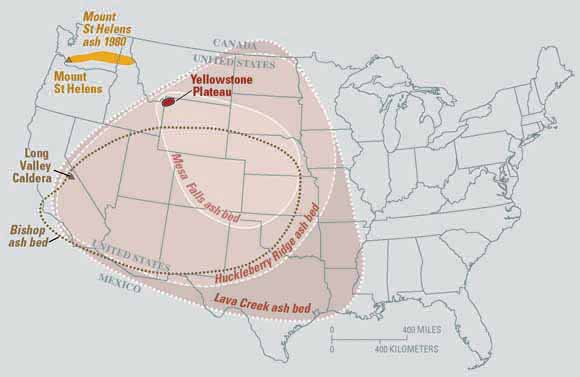The gigantic volcano in Yellowstone has erupted three times over the last two million years, covering a huge area of surrounding land.
Up to 17 states could be fully or partially impacted if the volcano erupted again. The far south of Canada could also get hit, as well as the far north of Mexico.
Now, which US states will be impacted by the next Yellowstone supereruption?

This map from the U.S. Geological Service shows the range of the volcanic ash that was deposited after the biggest of the Yellowstone National Park eruptions around 2.1 million years ago.
These eruptions left behind huge volcanic depressions called “calderas” and spread volcanic ash over large parts of North America.
If another large caldera-forming eruption were to occur at Yellowstone, its effects would be worldwide.
Thick ash deposits would bury vast areas of the United States, and injection of huge volumes of volcanic gases into the atmosphere could drastically affect global climate.
Fortunately, the Yellowstone volcanic system shows no signs that it is headed toward such an eruption in the near future. In fact, the probability of any such event occurring at Yellowstone within the next few thousand years is exceedingly low.
If you look at the image below showing the last 20 years of earthquakes in the north-central part of the park, you observe that with the latest swarms in February 2014 and April 2014, earthquakes are elevated. The previous uptick in earthquakes in this part of the park was during the previous period of uplift in this region.

But scientists aren’t sure when the Yellowstone supervolcano will erupt next, although many have sought to assure the public that it probably won’t for a while.
In reality, the volcano could erupt at any time, though officials would in theory be able to detect an impending eruption and alert Americans to the threat.











